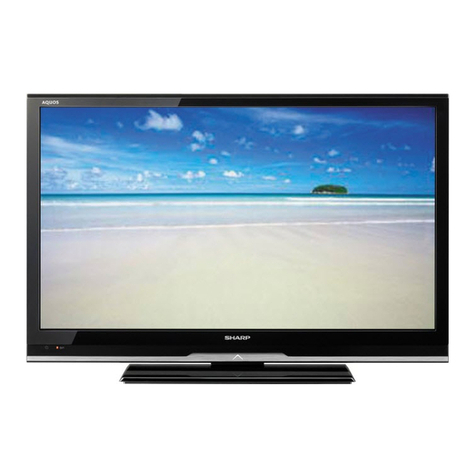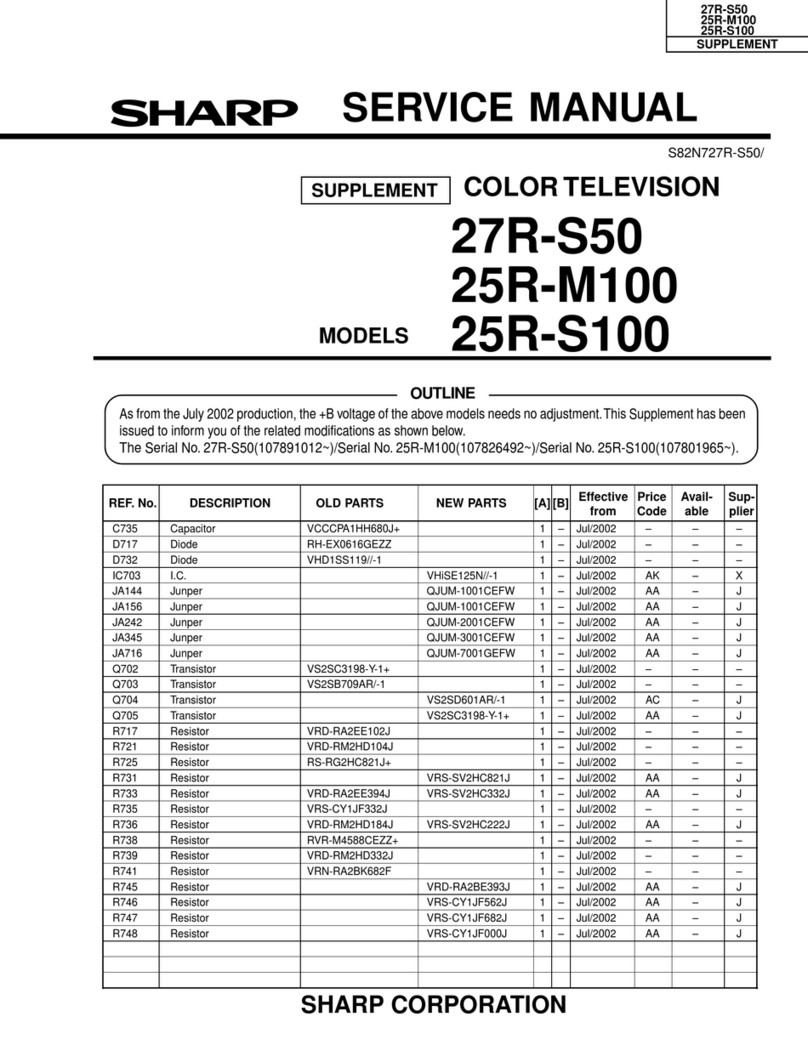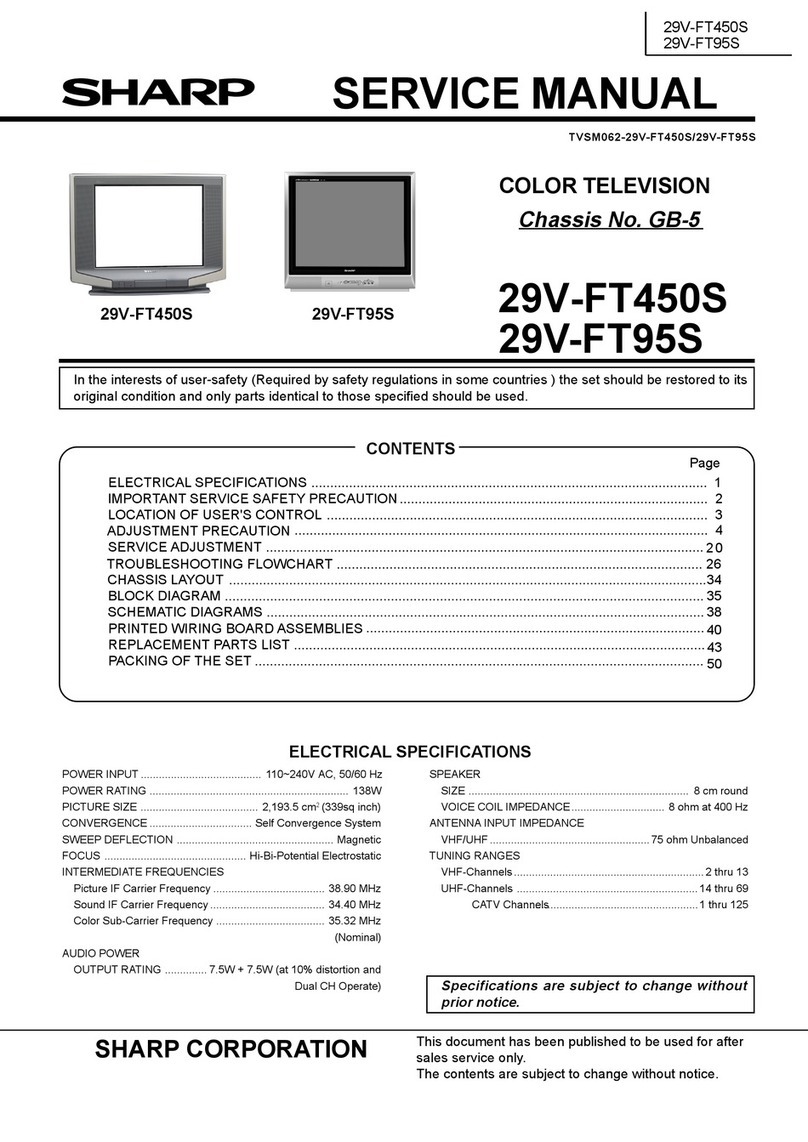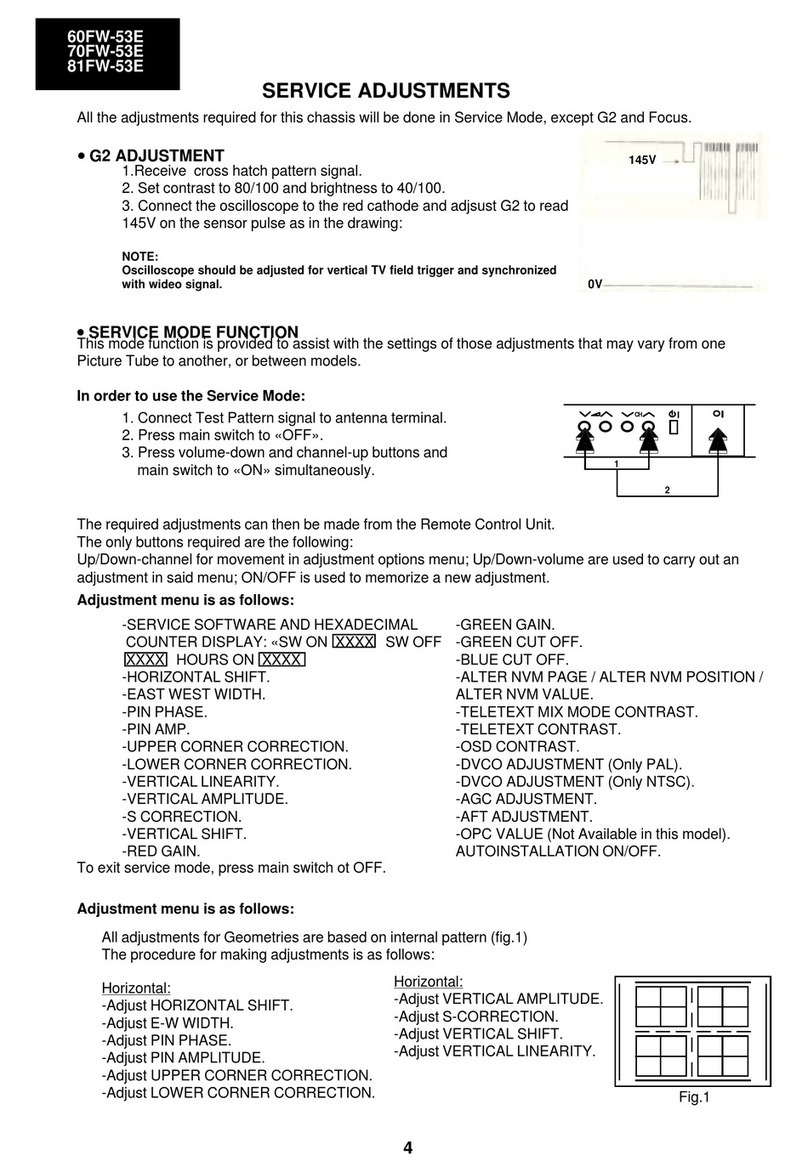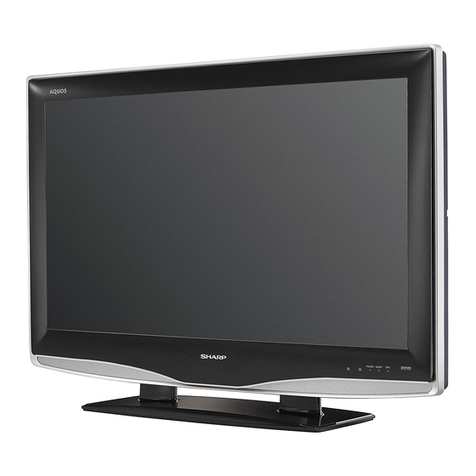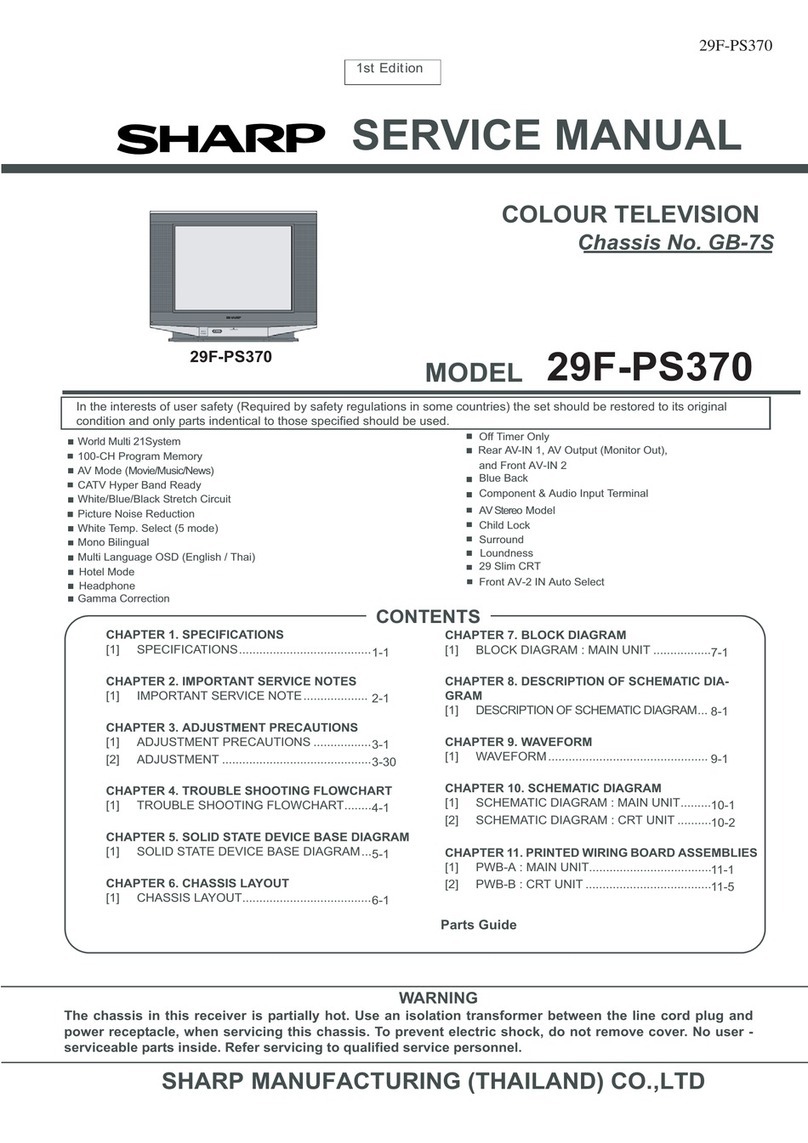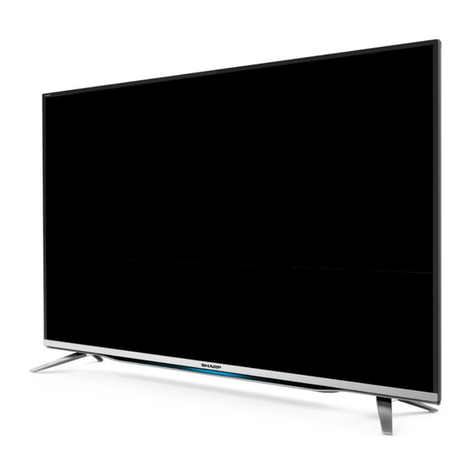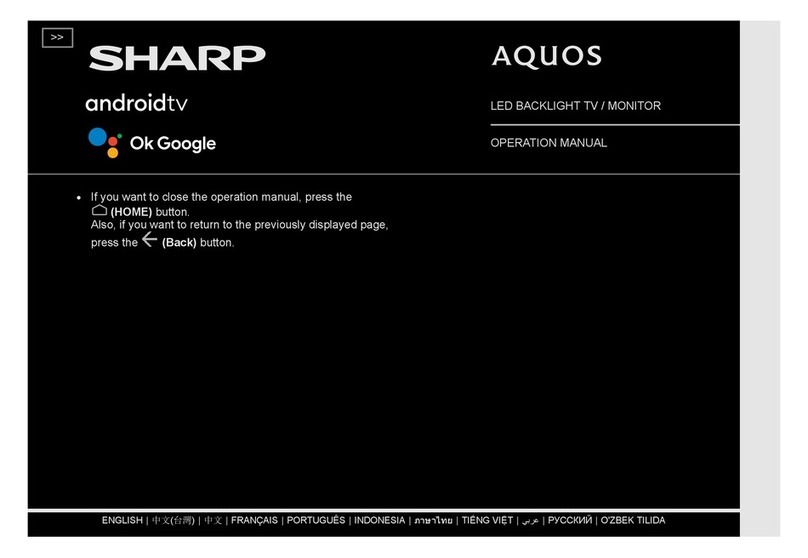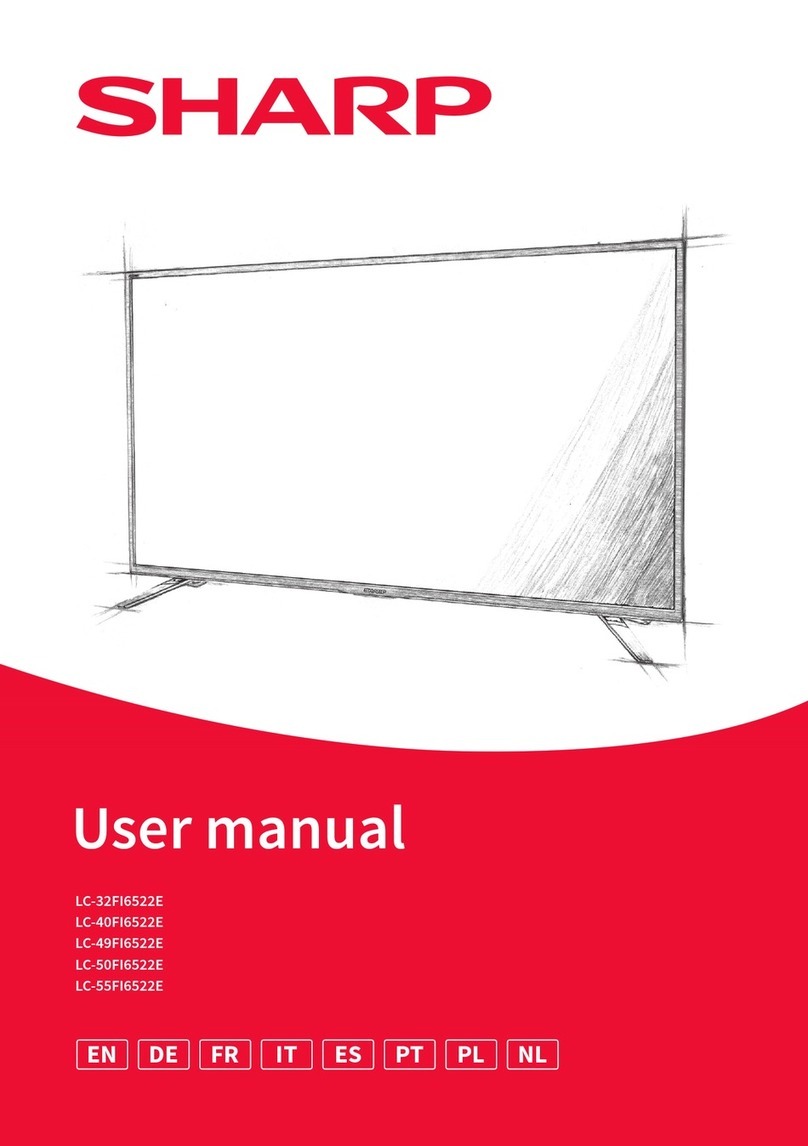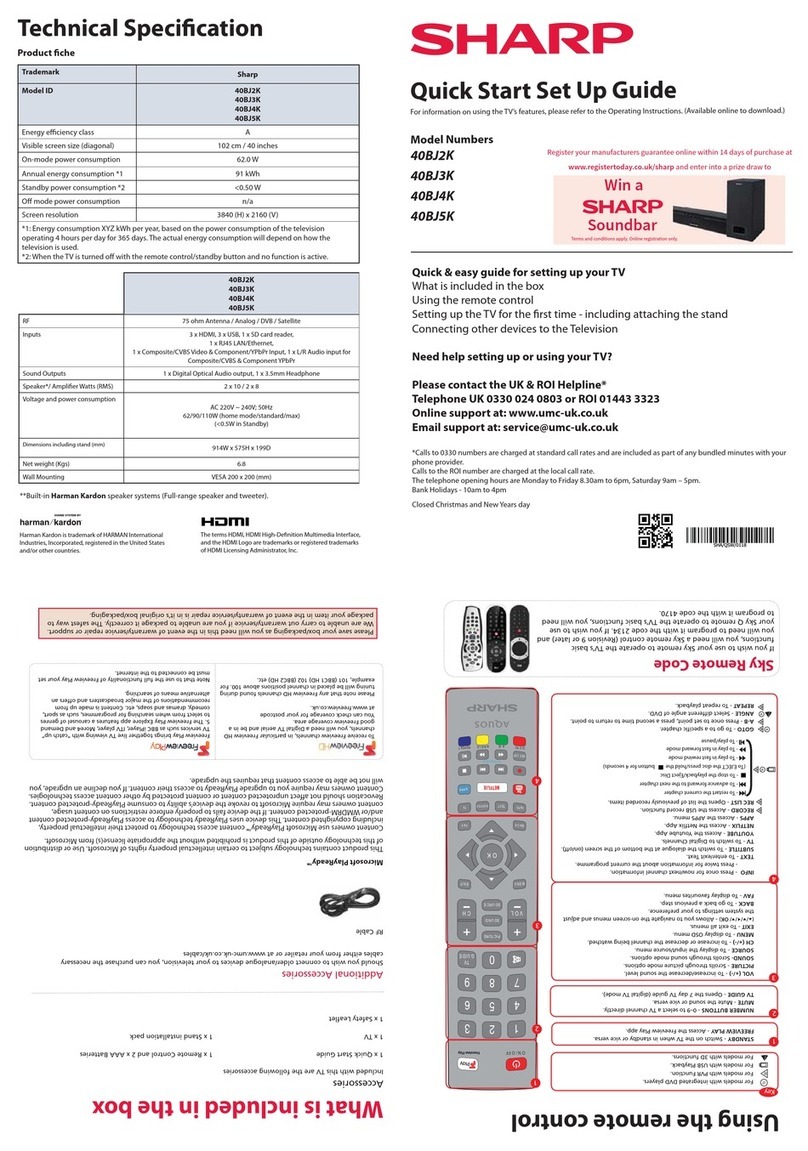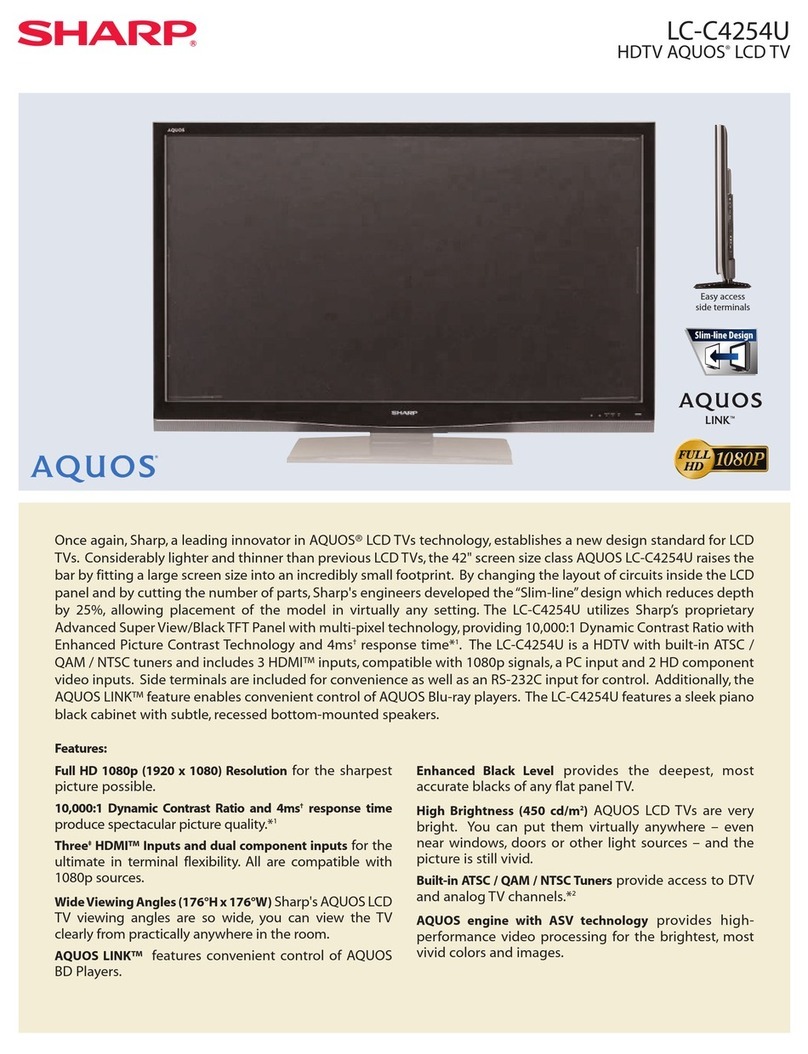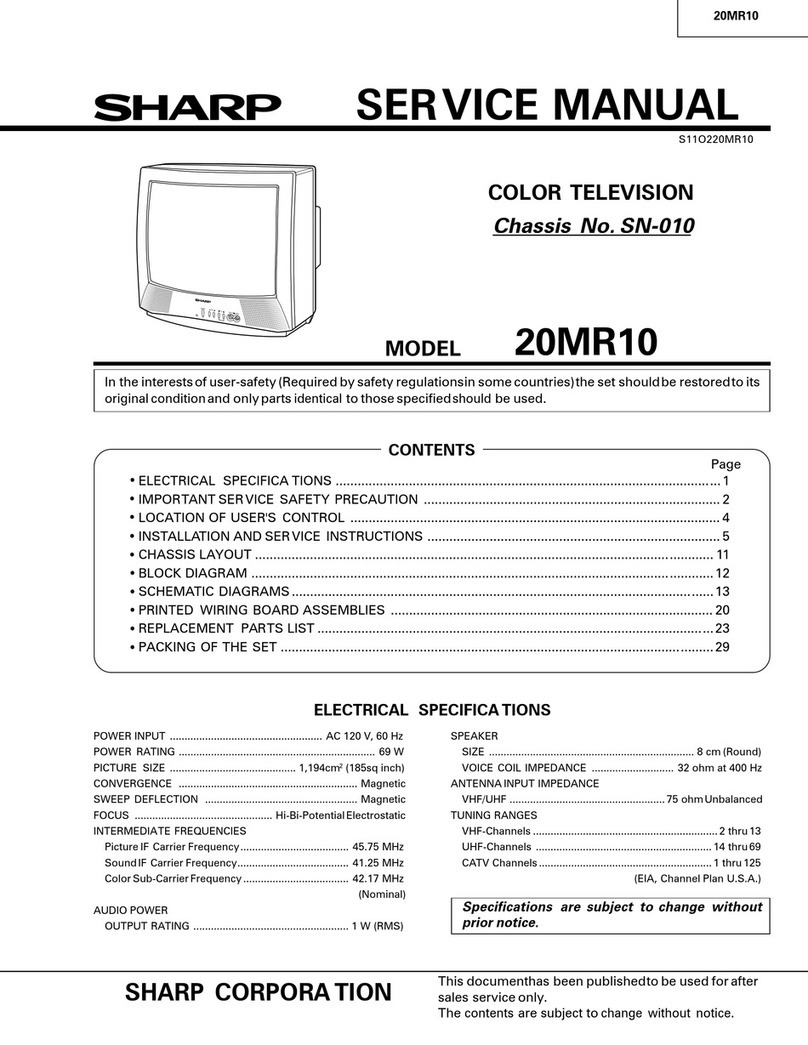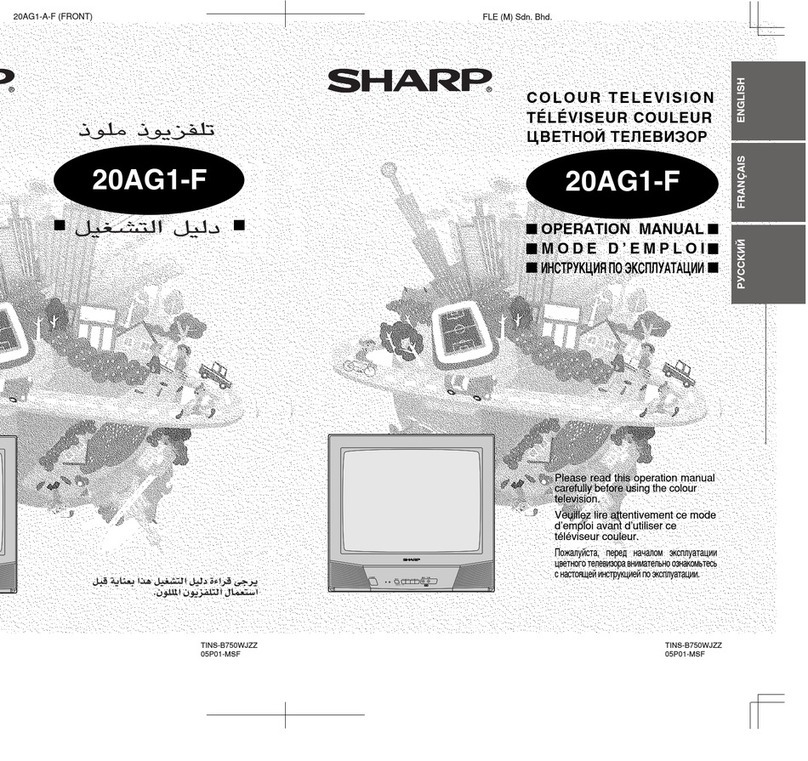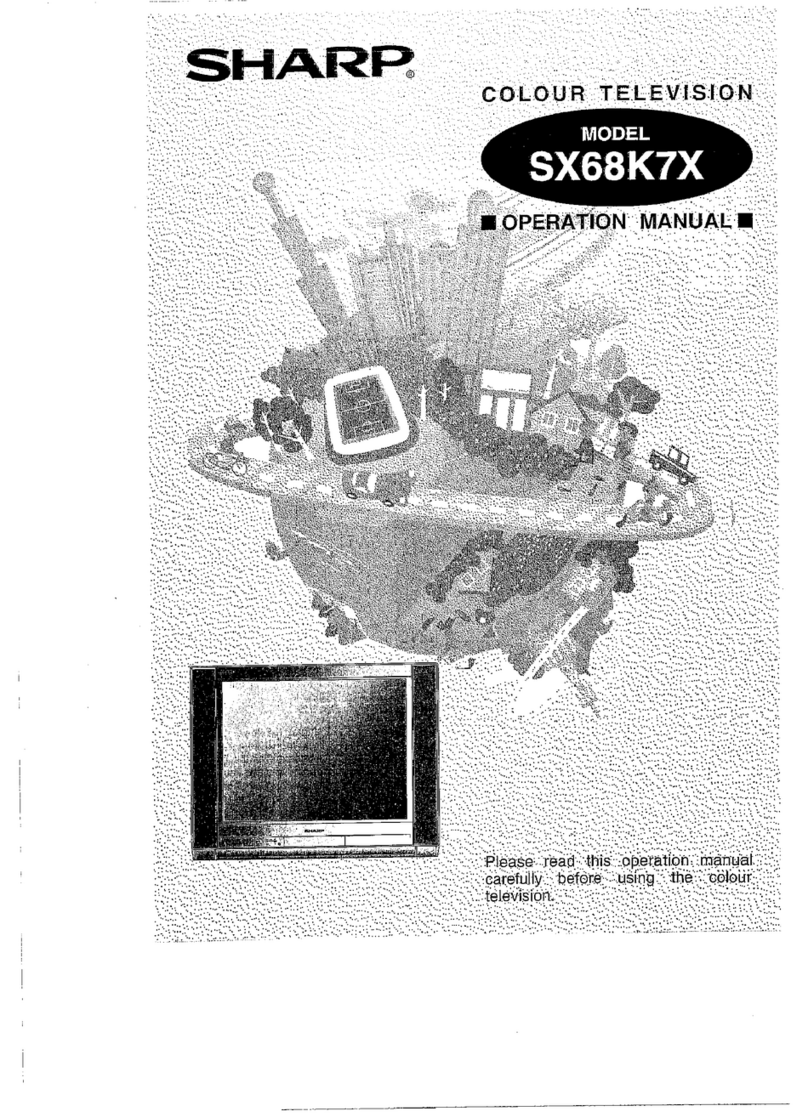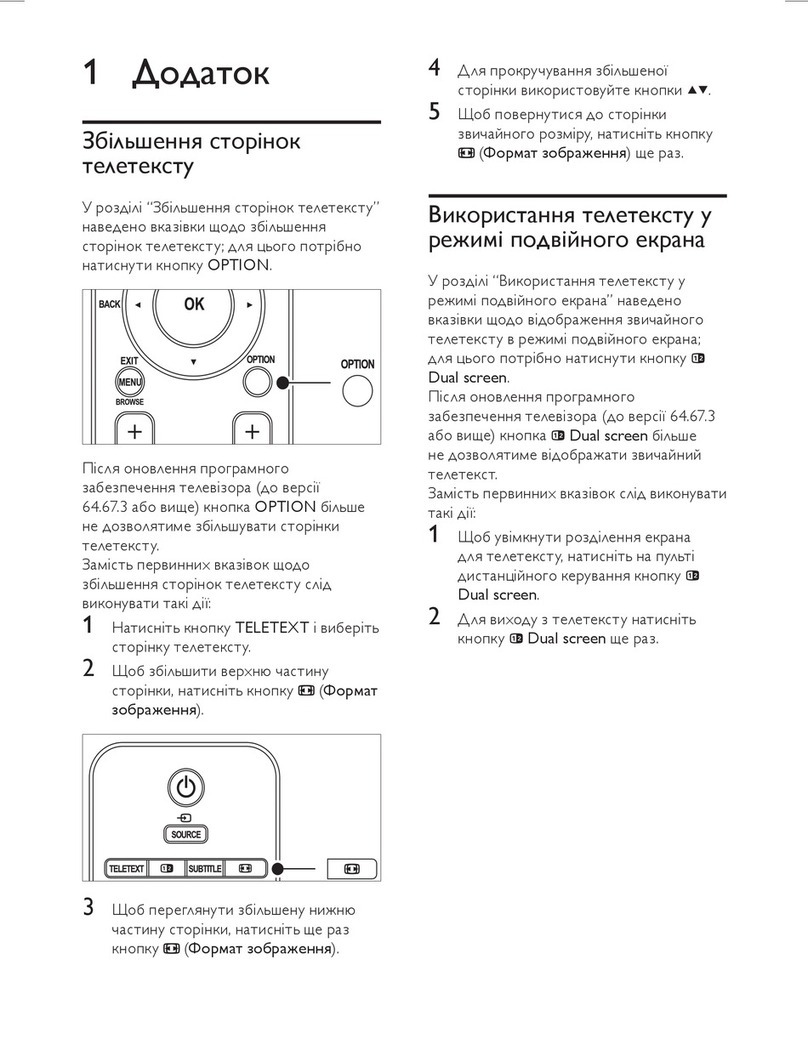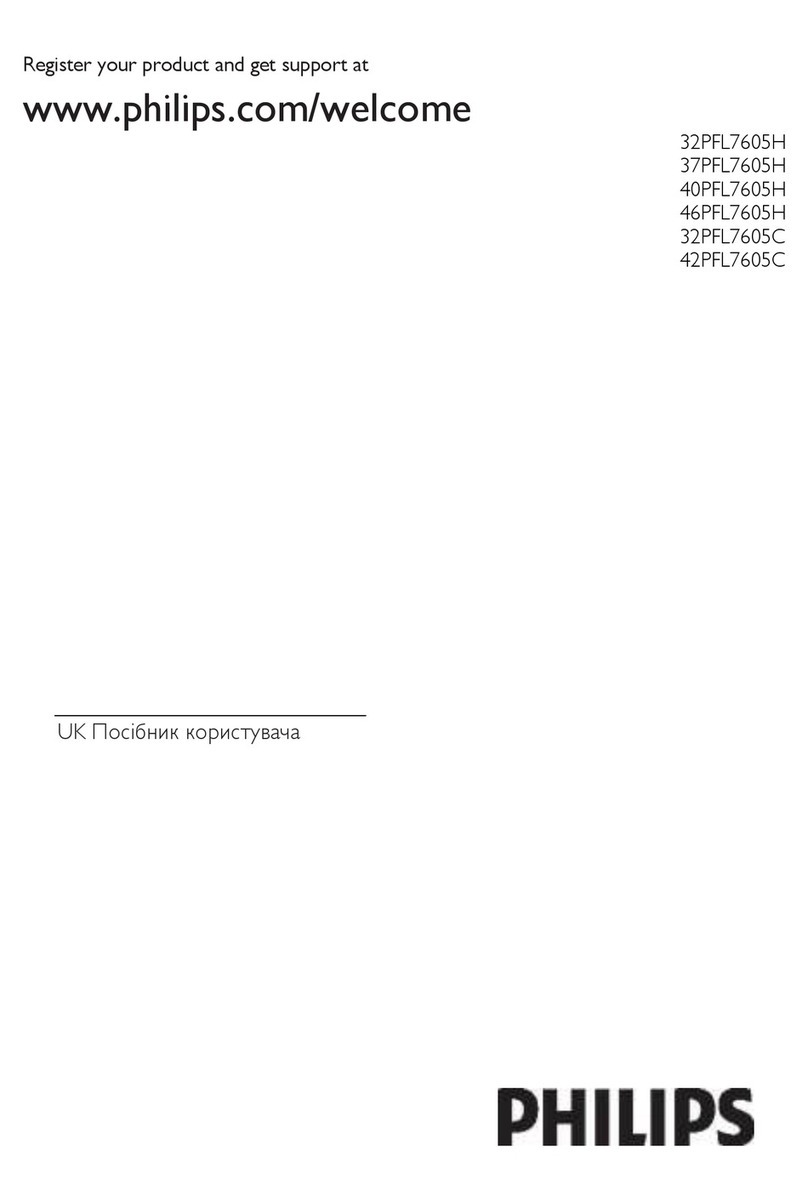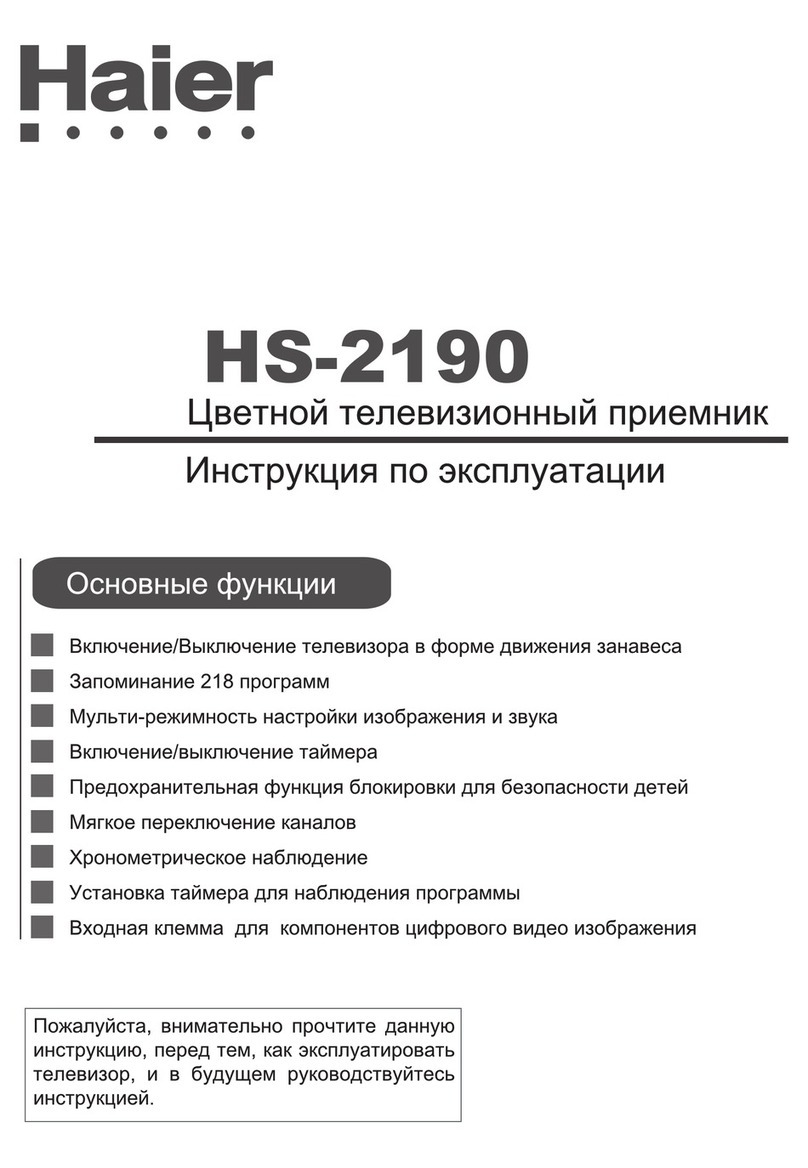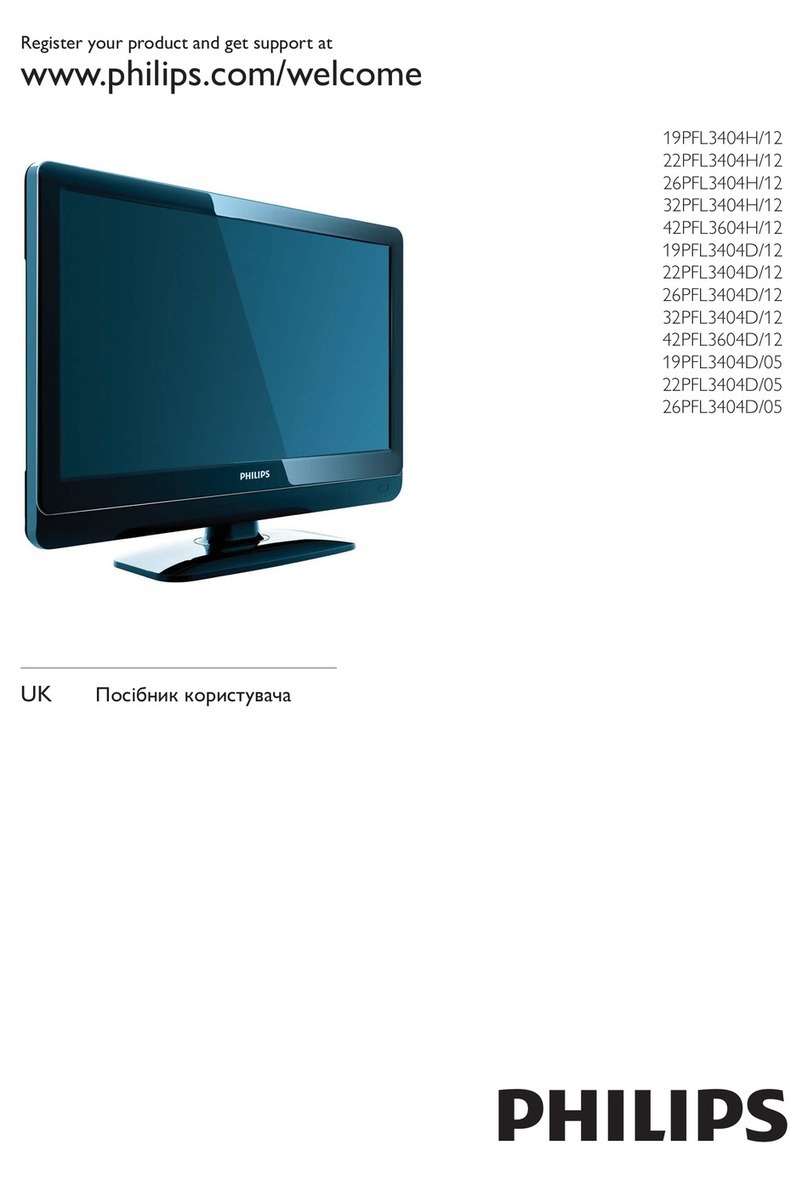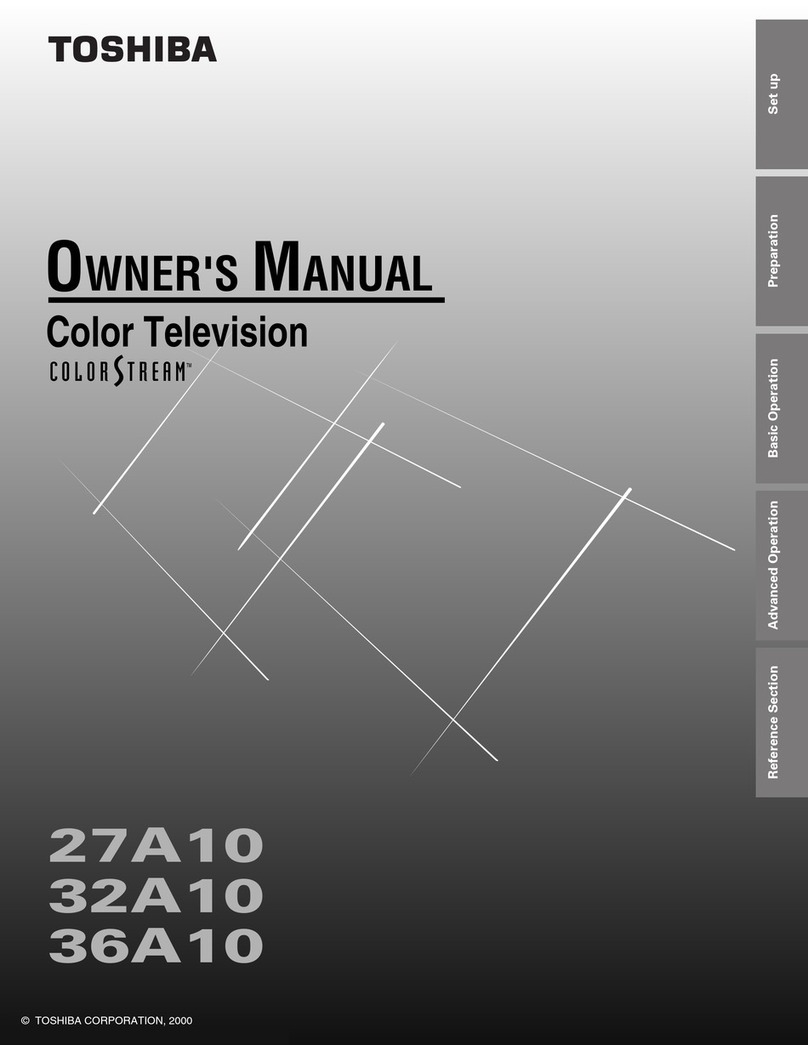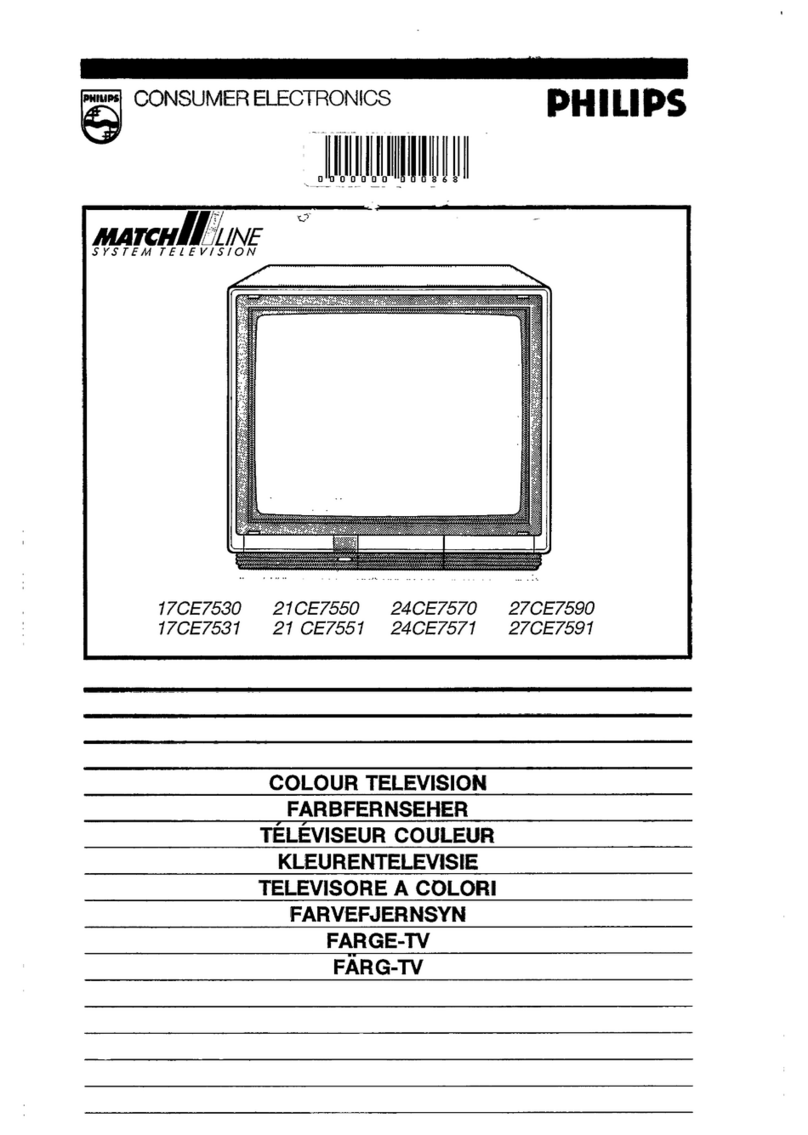SPECIFICATIONS
Convergence.
. . . . . . . . . . . . . . . . . . . . . . . . . . . . . . . . . . . . . . . . . . . . . . . . . . . . . . . . . . . . . . . . . . .
Focus Self Converging System
. . . . . . . . . . . . . . . . . . . . . . . . . . . . . . . . . . . . . . . . . . . . . . . . . . . . . . . . . . . . . . . .
Quadra-Potential Electrostatic
Sweep
Deflection . . . . . . . . . .
. . . . . . . . . . . . . . . . . . . . . . . . . . . . . . . . . . . . . . . . . . . . . . . . . . . . . . . . . . . . . . . . . . . . . . . . . . .
Intermediate Frequencies Magnetic
Picture
IF
Carrier . . . . . . . . . . . . . . . . . . . . . . . . . . . . . . . . . . . . . . . . . . . . . . . . . . . . . . . . . . . . . . . . . . . . . . . . . . . . . . . . .
38.9 MHz
Sound IF Carrier Frequency
6.5
MHz
. . . . . . . . . . . . . . . . . . . . . . . . . . . . . . . . . . . . . .
. .
.
. . . . . . . . . . . . . . . . . . . . . . . . . . . . . . . . . . . . . . . . . . . . . . . . . . .
32.4
MHz
6.0
MHz . . . .
.._......
. . . . . . . . . . . . . . . . . . . . . . . . . . . . . . . . . . . . . . . . . . . . . . . . . . . . . . . . . . . . . . . . . . . . . . . . . . . . . . .
32.9 MHz
5.5
MHz
. . . . . . . .
. . . . . . . . . . . . . . . . . . . . . . . . . . . . . . . . . . . . . . . . . . . . . . . . . . . . . . . . . . . . . . . . . . . . . . . . . . . . . . . . . . . .
33.4
MHz
Colour
Sub-Carrier Frequency
._ . . . . . . . . . . . . . . . . . . . . . . . . . . . . . . . . . . . . . . . . . . . . . . . . . . . . . . . .
34.47
MHz
Power
Input . . . . . . . . . . . . . . . . . . . . . . . . . . . . . . . . . . . . . . . . . . . . . . . . . . . . . . . . . . . . . . . . . . . . . . . .
1
i O-240V
AC 50/60 Hz
Power Consumption
. . . . . . . . . . . . . . . . . . . . . . . . . . . . . . . . . . . . . . . . . . . . . . . . . . . . . . . . . . . . . . . . . . . . . . . . . . . . . . . . . . . . . . .
65
W
Audio Power Output Rating . . .
.._.
..“.................~...................................,..........
3.0 w
(at Max.)
Speaker
Size
. . . . . . . . . . . . . . . . . . . . . . . . . . . . . . . . . . . . . . . . . . . . . . . . . . . . . . . . . . . . . . . . . . . . . . . . . . . . . . . . . . . . . . . . . . .
Voice Coil Impedance . . .
5cmx9cmlpc
. . . . . . . . . . . . . . . . . . . . . . . . . . . . . . . . . . . . . . . . . . . . . . . . . . . . . . . .
16 ohms at 400 Hz
Aerial tnput Impedance
VHF/UHF . . . . .
. . . . . . . . . . . . . . . . . . . . . . . . . . . . . . . . . . . . . . . . . . . . . . . . . . . . . . . . . . . . . . . . . . . . . . . .
75 ohm Unbalanced
Receiving System
. . . . . . . . . . . . . . . . . . . . . . . . . . . . . . . . . . . . . . . . . . . . . . . . . . . . . . . . . . . . . . . . . . . . . . . . . .
CCiR PAL
6,
G
NTSC
3.58i4.43
MHz
(AV
Input Only)
Tuner Ranges
l
VHF-Channels ....
.._.......................... E2
(48.25 MHz)
thru
El2
(224.25 MHz)
Cl (49.75 MHz)
thru
Cl2
(216.25 MHz)
Sl
(105.25 MHz)
thru
S41
(463.25 MHz)
l
UHF-Channels
. . . . . . . . . . . . . . . . . . . . . . . . . . . . .
E21
(471.25 MHz)
thru
E69
(855.25 MHz)
Cl3
(471.25MHz)
thru
C57
(863.25 MHz)
Dimensions
CX-34G3 . . .
.. . . . . . . . . . . . . . . . . . . . . . . . . . . . . . . . . . . . . . . . . . . . . . . . . . . . . . . . . . . . . . . . . . . . . . . .
Width:
357.0
mm
Height: 360.0 mm
Depth: 359.5 mm
CX-51G3
...
..I.......
Weight (approx.): 9.5 kg
. . . . . . . . . . . . . . . . . . . . . . . . . . . . . . . . . . . . . . . . . . . . . . . . . . . . . . . . . . . . . . . .
Width:
449.0
mm
Height: 475.0 mm
Depth: 473.0 mm
Cabinet Material . . . . . . . . . . . . . . .
Weight (approx.): 21.0 kg
... . . . . . . . . . . . . . . . . . . . . . . . . . . . . . . . . . . . . . . . . . . . . . . . . . . . . . . . . . . . . . . . . . .
All Plastics
Specifications are subject to change without
prior notice.
1
2-l
IMPORTANT SERVICE NOTES
Maintenance and repair of this receiver should be done by
qualified service personnel only.
SERVICING OF HIGH VOLTAGE SYSTEM AND
PICTURE TUBE
When servicing the high voltage system, remove static charge from it by
connecting a 10k ohm Resistor in series with an insulated wire (such as a
test probe) between picture tube dag and 2nd anode lead. (AC line cord
should be disconnected from AC outlet.)
1.
Picture tube in this receiver employs integral implosion protection.
2.
Replace wlth tube of the same type number for continued safety.
3.
Do not lift picture tube by the neck.
4.
Handle the picture tube only when wearing shatterproof goggles and after discharging
the high voltage completely
X-RAY
This receiver is designed so that any X-Ray radiation is kept to an absolute
minimum. Since certain malfunctions or servicing may produce potentially
hazardous radiation with prolonged exposure at close range, the following
precautions should be observed:
1.
CX-34G3:
When repairing the circuit, be sure not to Increase the high voltage to more
than 23.5
kV
(at beam 0
PA)
for the set.
CX-51G3:
When repairing the circuit, be sure not to Increase the high voltage to more
than 29.0
kV
(at beam 0
PA)
for the set.
2.
CX-34G3: To keep the set in a normal operation, be sure to make it function on 22.0 kV
f
1.5
kV
(at beam 800
PA)
in the case of the set. The set has been factory
-
Adjusted to the above-mentioned high voltage.
CX-51G3: To keep the set in a normal operation, be sure to make it function on 24.8 kV
f
1.5
kV
(at beam 1100
PA)
in the case of the set. The set has been factory
-
Adjusted to the above-mentioned high voltage.
:.
If there is a possibility that the high voltage fluctuates as a result of the repairs, never
forget to check for such high voltage after the work.
3.
Do not substitute a picture tube with unauthorized types and/or brands which may cause
excess X-ray radiation.
BEFORE RETURNING THE RECEIVER
Before returning the receiver to the user, perform the following safety
checks.
1.
Inspect all lead dress to make certain that leads are not pinched or that hardware is not
lodged between the chassis and other metal parts in the receiver.
2.
Inspect all protective devices such as non-metallic control knobs, Insulating fishpapers,
cabinet backs, adjustment and compartment covers or shields, isolation resistor-
capacity networks, mechanical Insulators etc.
2-2


